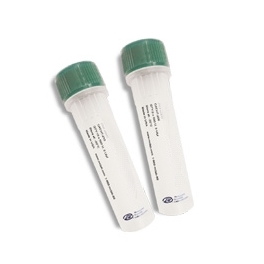 View full size
View full size
- Analiza kwasów nukleinowych
- Analiza białek
- Odczynniki biochemiczne
- Enzymy
- Edytowanie genów
- Klonowanie
- Diagnostyka kliniczna
- Human Identification STR kits
- Sprzęt laboratoryjny
- Oprogramowanie
- A&A Biotechnology
- AdvancedSeq
- BioDynami
- Plant Cell Technology
Aktualności
-
XXXV. Izakovičov memoriál 2025
We are pleased to announce our participation in the prestigious XXXV. Izakovič Memorial 2025, which will take place on October 8–10, 2025 at the Grandhotel Praha, Tatranská Lomnica. The Izakovič Memo...
Czytaj więcej -
1st Czechoslovak Congress of Medical Genetics 2025
In the spring, we will participate in the 1st Czechoslovak Congress of Medical Genetics, which will take place from April 2–4, 2025, at the Cultural and Congress Center Elektra in the spa town of Luha...
Czytaj więcej -
RANK 2025
Visit us at the 19th edition of the RANK 2025 conference, which will take place on March 19th and 20th at the Zlatá Štika Hotel in Pardubice. The conference is organized by the Czech Society of Clinic...
Czytaj więcej
 View full size
View full size
Description:
Extreme Thermostable SSB is a single-stranded DNA binding protein isolated from a hyperthermophilic microorganism. It remains fully active after incubation at 95°C for up to 60 minutes. Due to its ability to withstand extremely high temperature environments, ET SSB can be used in applications that require extremely high temperature conditions, such as nucleic acid amplification and sequencing.
Source:
Purified from an E. coli strain that overexpresses the SSB gene isolated from a hyperthermophilic microorganism.
Application:
- Improves the yield of multiplex PCR and multiplex HAD
- Increases the yield and processivity of RT during RT-PCR(1,2)
- Increases the yield and specificity of PCR reactions(3-7)
- Improves the processivity of DNA polymerase(8)
- Stabilization and marking of ssDNA structure (9)
- Improves DNA sequencing through regions with strong secondary structure(6)
- Enhances the RecA activity for ssDNA binding and strand transfer (10,11)
Unit Definition:
Sold by mass of pure protein as determined by OD280.
Recommended Storage Condition: -20ºC
Reference:
1. Baugh, L. R., Hill, A. A., Brown, E. L. & Hunter, C. P. (2001) Nucleic Acids Res 29, E29.
2. Villalva, C., Touriol, C., Seurat, P., Trempat, P., Delsol, G. & Brousset, P. (2001) Biotechniques 31, 81-3, 86.
3. Schwarz, K., Hansen-Hagge, T. & Bartram, C. (1990) Nucleic Acids Res 18, 1079.
4. Chou, Q. (1992) Nucleic Acids Res 20, 4371.
5. Oshima, R. G. (1992) Biotechniques 13, 188.
6. Rapley, R. (1994) Mol Biotechnol 2, 295-8.
7. Olszewski, M., Rebala, K., Szczerkowska, Z. & Kur, J. (2005) Mol Cell Probes 19, 203-5.
8. Myers, T. W. & Romano, L. J. (1988) J Biol Chem 263, 17006-15.
9. Delius, H., Mantell, N. J. & Alberts, B. (1972) J Mol Biol 67, 341-50.
10. Reddy, M. S., Vaze, M. B., Madhusudan, K. & Muniyappa, K. (2000) Biochemistry 39, 14250-62.
11. West, S. C., Cassuto, E. & Howard-Flanders, P. (1982) Mol Gen Genet 186, 333-8.


